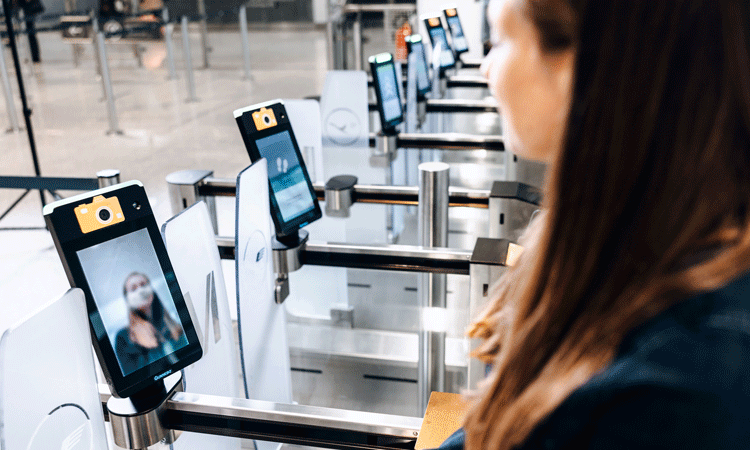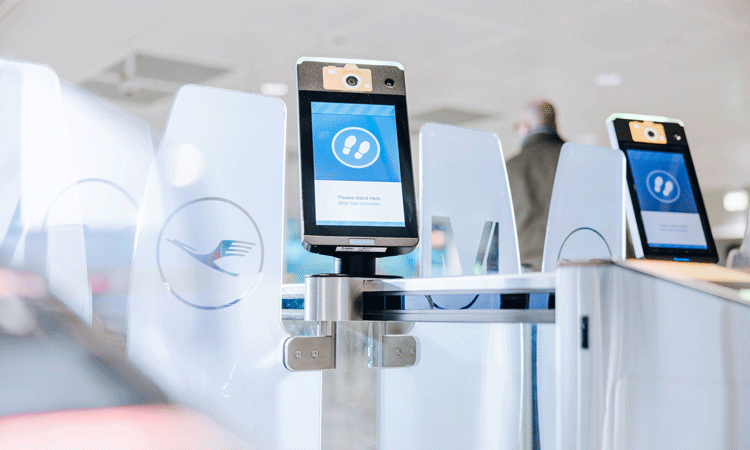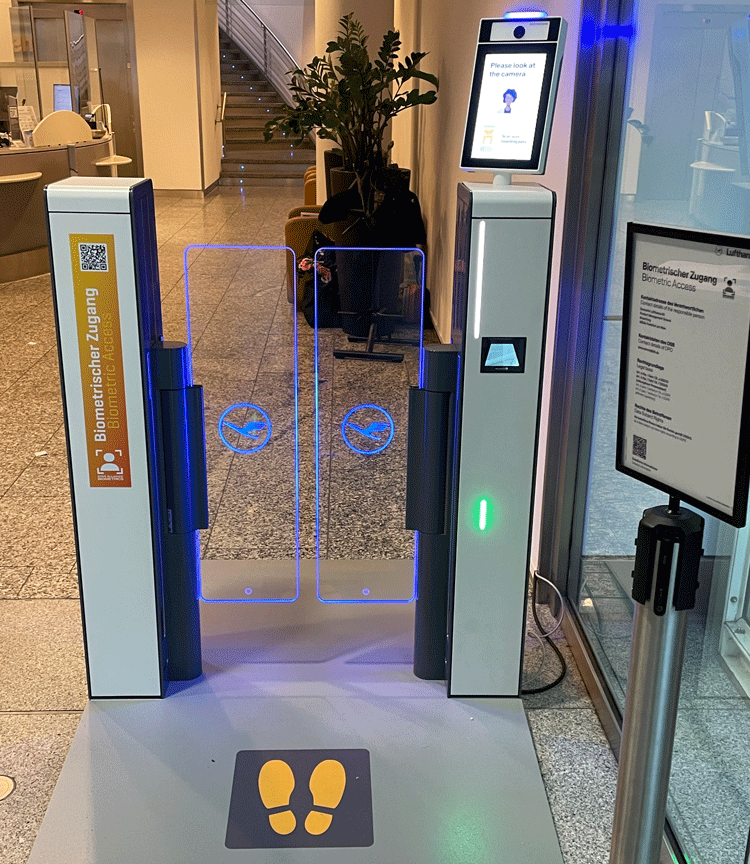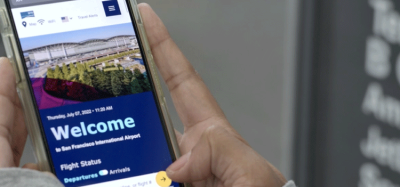The role of biometrics at Munich Airport
- Like
- Digg
- Del
- Tumblr
- VKontakte
- Buffer
- Love This
- Odnoklassniki
- Meneame
- Blogger
- Amazon
- Yahoo Mail
- Gmail
- AOL
- Newsvine
- HackerNews
- Evernote
- MySpace
- Mail.ru
- Viadeo
- Line
- Comments
- Yummly
- SMS
- Viber
- Telegram
- Subscribe
- Skype
- Facebook Messenger
- Kakao
- LiveJournal
- Yammer
- Edgar
- Fintel
- Mix
- Instapaper
- Copy Link
Posted: 5 July 2024 | Laura Pichler, Ute Barth | No comments yet
Ute Barth, the Senior Manager Product Development Ground at Lufthansa Airlines, and Laura Pichler, the Innovation and Digitalisation Manager at Munich Airport, explain the journey their companies have had in rolling out biometrics and delve deeper into its benefits and challenges.


In recent years, the aviation industry has witnessed a significant shift towards the adoption of biometric technology. Biometrics, the science of identifying individuals based on their unique physical characteristics, has emerged as a powerful tool to enhance security measures while streamlining passenger processes. In the following, we will look at the processes and benefits of biometrics at Munich Airport – highlighting its positive impact on both travellers and airport authorities, as well as its challenges.
Enhanced security
Traditional identification methods like passports and boarding passes can be vulnerable to counterfeiting and identity theft. Biometric systems, on the other hand, make it extremely difficult for unauthorised individuals to bypass checkpoints by relying on unique physical characteristics such as fingerprints, facial recognition and iris scans. By integrating biometric technology, airports can ensure a higher level of accuracy to reduce the risk of unauthorised access and potential security threats.
Streamlined passenger processes
Biometrics not only enhances security but also significantly improves the efficiency of passenger processes. Queuing at checkpoints and boarding gates can be annoying for travellers. With biometric systems, these processes can be streamlined – reducing wait times and improving the overall passenger experience.


The technology behind Munich Airport’s facial recognition e-Gates.
The technology behind the facial recognition used at Munich Airport and how it works
In November 2020, Star Alliance Biometrics was introduced at Munich Airport’s Terminal 2. This terminal is a unique joint venture between the Lufthansa Group and the airport. Jointly built, financed, and operated by the two companies, it is a perfect merger of airline and airport expertise to maximise the passenger travel experience. Terminal 2 with the adjacent midfield terminal is used exclusively by Lufthansa and Star Alliance partners. Star Alliance Biometrics is a Star Alliance product that was developed in collaboration with various Star Alliance members, including first operator Lufthansa.
Star Alliance Biometrics’ facial recognition software compares passengers’ live images with boarding pass information and personal biometric profiles at designated touchpoints in Terminal 2. These so-called eGates are equipped with the biometric identification system and are clearly marked with the Star Alliance Biometrics logo on the device and on the floor. A short video sequence of the passenger is recorded at the eGate. A photo is generated and compared to the profile stored with Star Alliance Biometrics. This enables accurate identification and booking. With this technology, passengers can move quickly through security checkpoints. By simply scanning their faces, travellers can be identified and verified within seconds, eliminating the need for manual document checks. This not only saves time but also reduces human error, ensuring a seamless and hassle-free journey for our passengers.
The registration with Star Alliance Biometrics is open for everyone. Signing up in the Star Alliance App is done in three easy steps: take a selfie, scan your passport and submit a consent form. Participants must be over the age of 18. New enrolments with Star Alliance Biometrics will be available for immediate use. After receiving the mobile or SMS boarding card for an upcoming flight in the airlines’ app, the boarding pass needs to be linked with the biometric profile in the Star Alliance app via “Link boarding pass”. Then the biometric services can be used for the selected flight.
Currently¸ the use of biometric facial recognition is restricted to flights operated by Lufthansa and Austrian. SWISS and Turkish Airlines are about to join shortly. The Star Alliance Biometrics product was first introduced by the Lufthansa Group. The aim is to encourage more Star Alliance carriers to get involved. Registered passengers can use their Star Alliance profile for flights of all participating airlines.
Among the participating airports at the moment are Munich, Frankfurt, Hamburg, Oslo and Vienna. Zurich Airport will come next. Brussels Airport’s participation is in planning. With this unique joint venture and the close co-operation between Lufthansa and the airport authority, Munich is the perfect testing ground for introducing and piloting new technologies.
The status of the biometric rollout at the Munich Airport
The Munich hub currently offers 10 e-gates for boarding card control in the pre-security area and 10 e-gates for boarding in the Schengen departure area. A further 10 boarding gates will be equipped this year, bringing the total number of e-gates to 20.
Since October 2023, the Lufthansa Business Schengen Lounge near Gate G28 at Munich Airport has been equipped with a biometric gate, enabling contactless access to a Lufthansa lounge for the first time. In the medium term, biometric facial recognition is to be rolled out across the entire passenger journey, as it will then offer the greatest added value. Already in the pipeline is biometric facial recognition for self-check-in and self-drop baggage kiosks, and there will be more to come. The investment in biometric processes is part of Lufthansa’s and Munich Airport’s comprehensive digital strategy. When introducing this technology, our focus is primarily on improving the comfort and stress-free travel experience for our passengers.


Lufthansa Business Schengen Lounge has been equipped with a biometric gate.
Challenges in implementing the biometrics project
As is often the case when introducing new technologies, you are entering unknown territory. Initially there is a lack of standards and experience, as well as a critical mass of participants to get projects off the ground.
While the benefits of biometrics in airports are undeniable, privacy and data protection concerns have emerged and need to be taken seriously. Transparency and clear communication regarding how data is handled are critical to building passenger trust and addressing any privacy concerns. This March, a campaign will be launched to market Star Alliance biometrics and build more confidence among our customers and of course also among other airline partners.
Another challenge we face are government barriers to registering personal information in various countries. This complicates an international roll-out.
We, Munich Airport and the Lufthansa Group, believe in this technology and have our sights set on the major goal of biometrics becoming established in many industries worldwide.
Conclusion
Biometrics will continue to revolutionise the way international airports operate and play a pivotal role in shaping the future of aviation security and passenger experience. Munich Airport and Lufthansa are already successful pioneers in this field – not least thanks to their close co-operation in the operation and management of Terminal 2.
Ute Barth is Senior Manager Product Development Ground & Passenger Experience at Lufthansa German Airlines and leads the strategic biometric identification project at all Lufthansa hubs. As part of her mission to improve processes and products related to flight disruptions for employees and customers, many simple ideas turned out to be a little more complicated than expected. Seamless travel is the vision she wants to support in her current project “Biometric Identification at Airports” to ensure the most pleasant travel experience. She holds a master’s degree in business administration.
Laura Pichler is responsible for driving innovation and digitisation at Terminal 2 Operating Company, a joint venture between Munich Airport and Lufthansa. She manages the strategic direction and development of biometric technology in Terminal 2 from the airport’s perspective. She has been with Munich Airport for several years and was previously responsible for the rollout and logistics management of video-based information systems in the airport’s IT department. She holds a Master of Science in Engineering in Web Communication and Information Systems.
Issue
Related topics
Biometrics, Digital transformation, Passenger experience and seamless travel, Security


















